Attractions At Assiniboine Park In Winnipeg, Manitoba
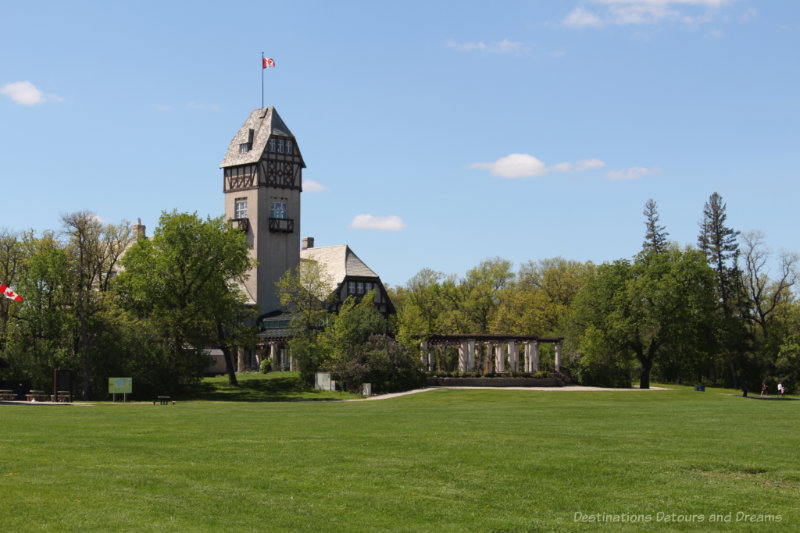
The many attractions within Assiniboine Park in Winnipeg, Manitoba, Canada include green spaces, playgrounds, gardens, art and entertainment, and a zoo
Assiniboine Park has served as a hub of year-round activity in Winnipeg, Manitoba, Canada for over a century. The large park west of the city’s centre has enough attractions within it to keep one busy for days. There are several gardens, art displays, entertainment, outdoor activities, historical displays, and a zoo. You’ll find a few posts on Destinations Detours and Dreams focusing on some of the individual attractions. This post is intended to provide an overview of the entire park. For a deeper dive into specific attractions, links are provided to those other posts.
Assiniboine Park History
The combined park and zoo were established in 1904. Designed by Frederick Todd, the park was established as a large “outside” suburban park for use as recreation and picnic grounds.
A Public Parks Boards had been created in Winnipeg in 1893 with a mandate to establish parks in the crowded city core. Locating small urban parks throughout the city was an unusual plan for a Canadian city of the time. According to A City at Leisure: An Illustrated History of Parks and Recreation Services In Winnipeg 1893-1993, written by Catherine Macdonald and published by the City of Winnipeg Parks and Recreation Department, the economic value of beautification, the need for fair access to recreation, and the need to counter the deleterious effects of urbanization of the working classes were motivating factors behind the creation of the Board.
The creation and development of nine neighbourhood parks within the city occupied the first ten years of the board’s life. They then turned to the development of a large “outside” suburban park. Where to locate the park was a topic of debate and, after some back-and-forth decisions, 290 acres along the Assiniboine River were purchased from the Munroe Pure Milk Company, a dairying operation. This area was beyond city limits at the time.
Over the next number of years, addition and enhancements were made that included a duck pond in 1908, a two-story pavilion in the same year, and a cricket patch and bandstand in 1911. The zoo evolved almost by accident. In 1904, the board had the opportunity to buy several species of native animals and set aside a place in the park to house the animals. By 1910, the mix of native and exotic species included swans, prairie wolves, buffalo, jumping deer, angora goats, and pheasants.
Additions and enhancements to the park have continued over the years and continue today. The Assiniboine Park Conservancy, a not-for-profit organization, is responsible for the operation of the park.
The Assiniboine Park and Zoo was designated a National Historic Event in 2016. Three reasons were cited. The city’s park planning policy illustrated an innovative approach in Canada at the time for emphasizing parks throughout the city as essential services for the enjoyment and recreational benefit of citizens. The rare surviving example of a combined park and zoo remains a thriving park with celebrated local landmarks and successfully adapted to changing needs of citizens. The park’s zoo speaks to the ongoing educational purpose of the park and the changing relationship between humans and animals.
Assiniboine Park Zoo
Assiniboine Park Zoo is home to more than 150 animal species from around the world in both indoor and outdoor exhibits. You’ll find camels from Asia as well as the snow leopard and the Amur tiger. An indoor tropical oasis of lush vegetation contains animals and birds from South America. Bison and information about bison feature prominently in the Grasslands area. Other animals found throughout the zoo’s various areas include kangaroo, reindeer, heavy draft horses, Bighorn sheep, and llamas.
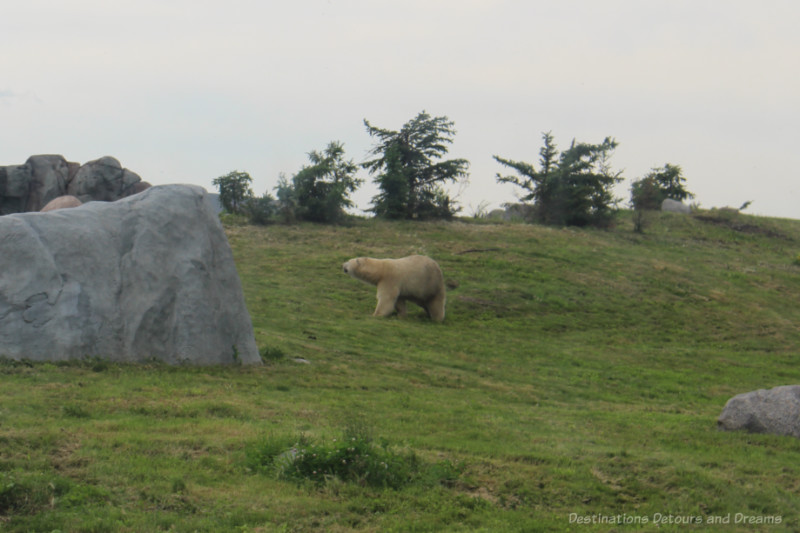
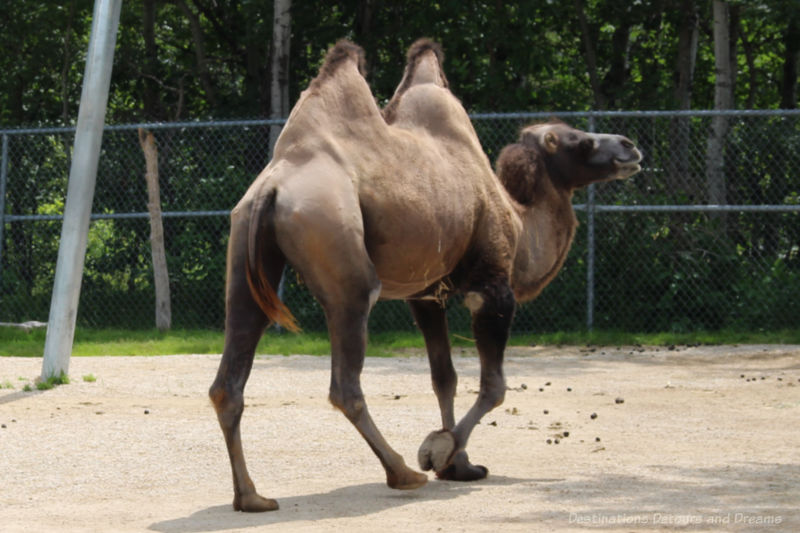
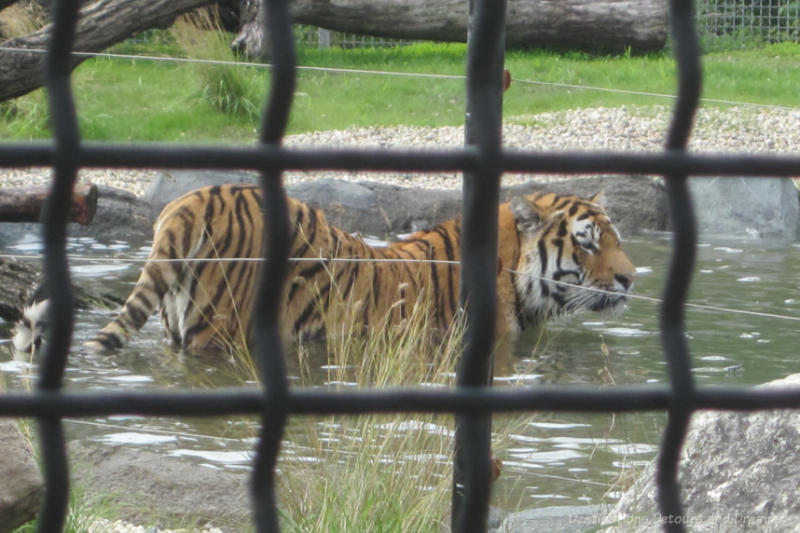
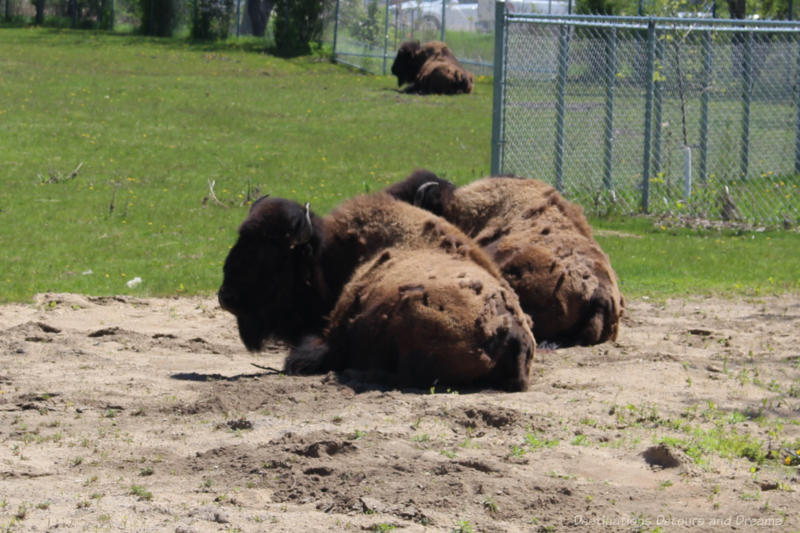
The Journey to Churchill Exhibit is a popular part of the zoo featuring the vegetation and animals of the north. You’ll find caribou, Arctic foxes, and polar bears, the star attraction. Most were rescued as cubs. An underwater viewing tunnel provides a great opportunity to watch the bears.
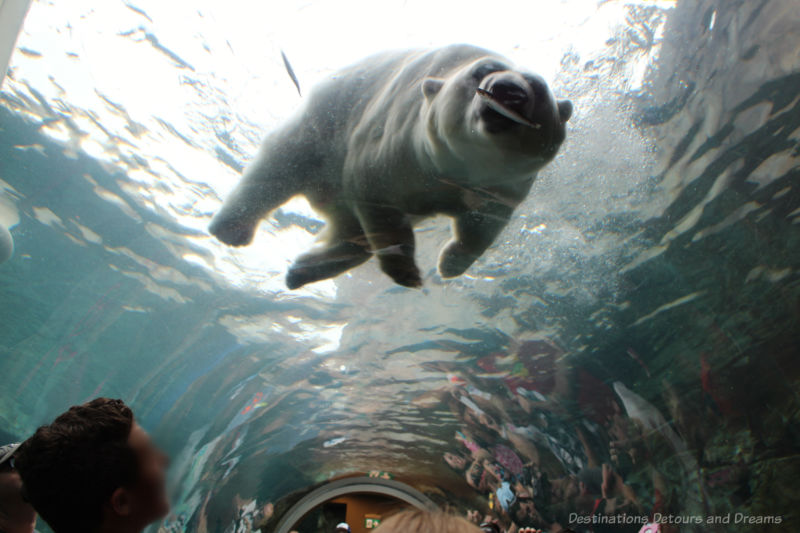
Aunt Sally’s Farm offers a playground area for young children as well as the chance to view goats, llamas, and sheep at play.
Read more in my post Assiniboine Park Zoo In Winnipeg, Manitoba.
Leo Mol Sculpture Garden
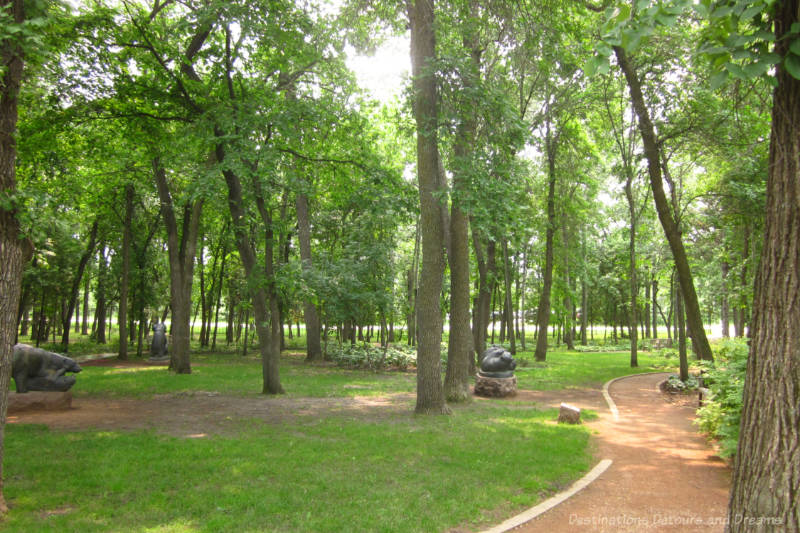
The Leo Mol Sculpture Garden is a quiet, peaceful retreat. A path meanders through a wooded area where you’ll find bronze pieces of art by master sculpture Leo Mol (1915-2009) amid the greenery and flowering plants. Born in the Ukraine, Mol made his home in Canada.
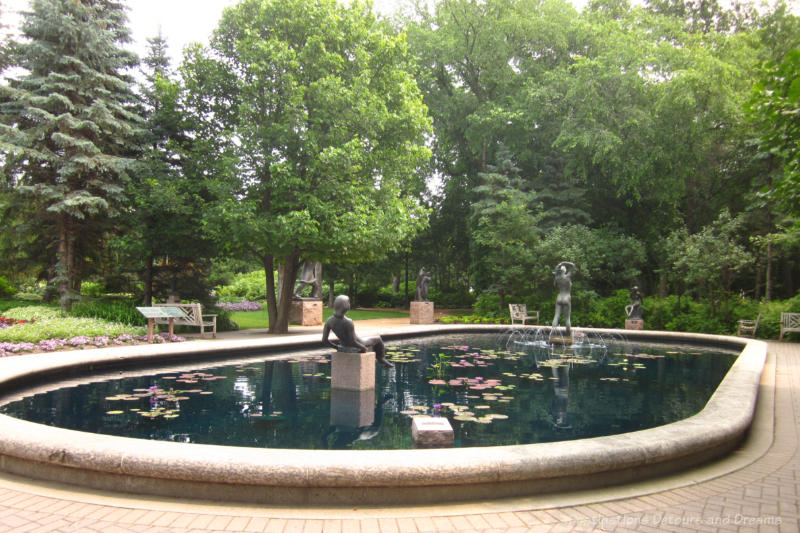
There is fountain—with a couple of Mol sculptures in it—in the centre of the garden. The Leo Mol Gallery featuring more works by the artist sits behind the fountain. The interior of the Leo Mol School House Studio, a former schoolhouse Mol purchased in the 1960s to serve as his studio, has been maintained intact and provides a glimpse into the process of creating a bronze sculpture.
Read more in my post Leo Mol Sculpture Garden.
English Garden
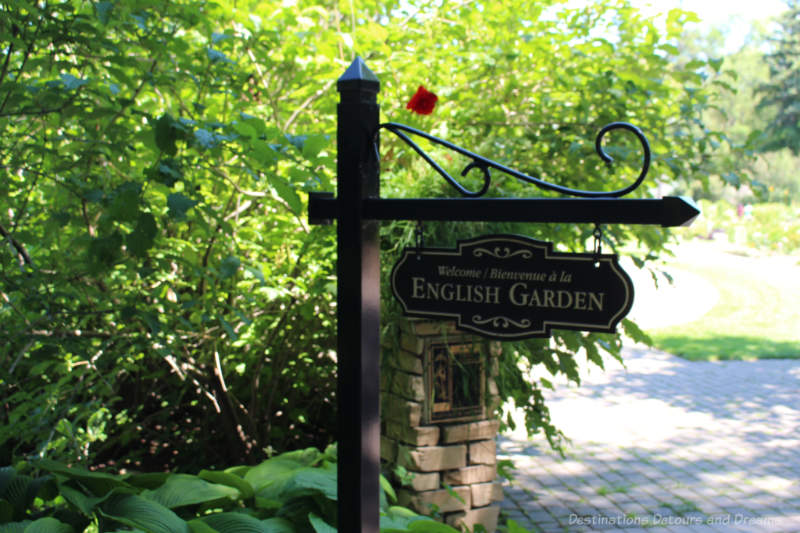
Winding paths and free form beds in the English Garden are indicative of the English Landscape style of garden. The informal garden contains evergreens and cedars, prairie grasses, Manitoba-bred roses, northern landscape plants, and many annual flowers.
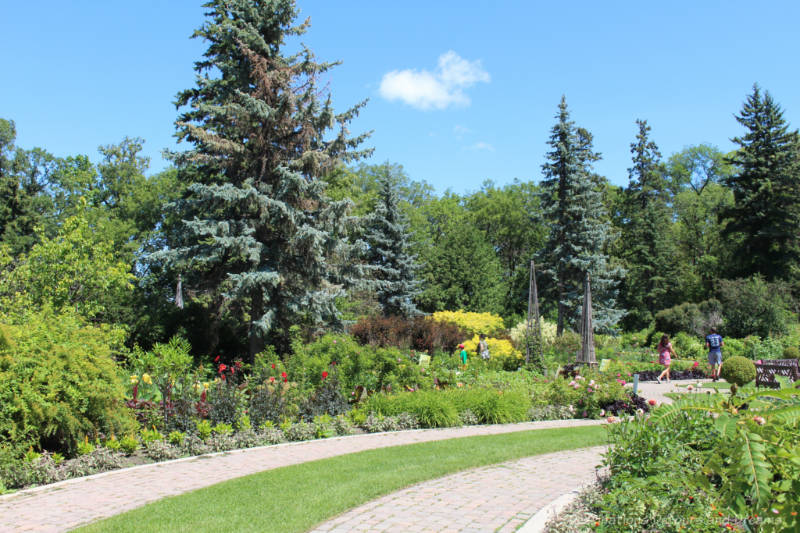
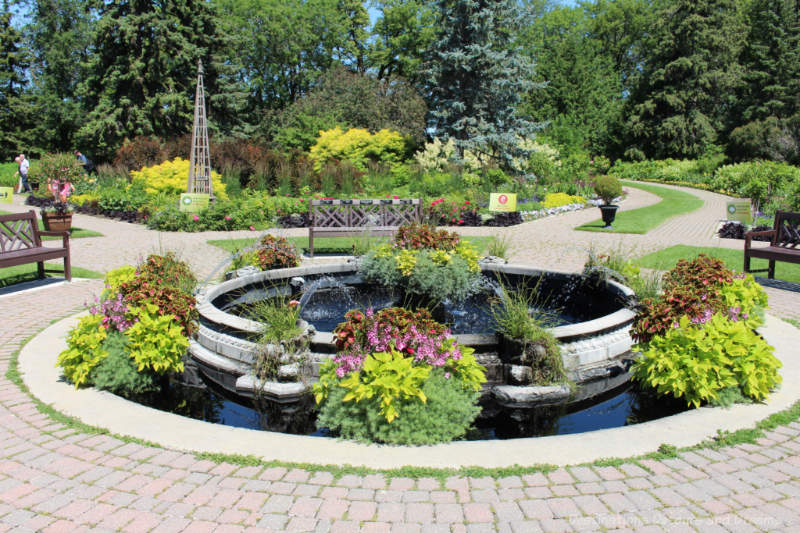
There is also a fountain at the centre of this garden with park benches encircling it. You’ll find statues, such as the notable Boy in the Boot, at the garden entrance and throughout the garden. A number of pieces contain connections to Winnipeg’s history.
It is a delight to take a leisurely stroll through the English Garden, enjoying the many colours and shapes of plants, the flowering aromas, and the singing of the birds. Read more in my post An English Garden In Winnipeg, Manitoba.
Nature Playground
The Nature Playground blends greenery and unique play structures to create a fun time for children and families. There are sand and water play areas, slides, willow tree tunnels, and net bridges. The Streuber Family Children’s Garden, contained within the Nature Playground, is a whimsical area featuring a tree-lined path and a patchwork of raised flower beds.
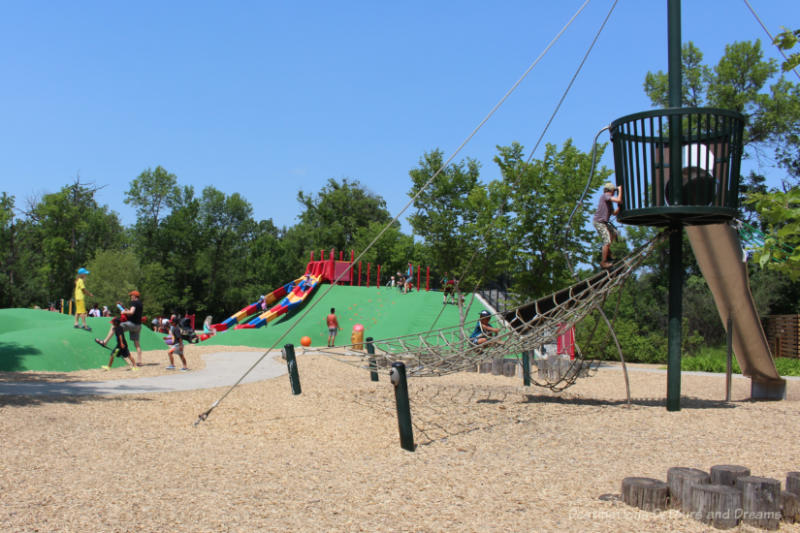
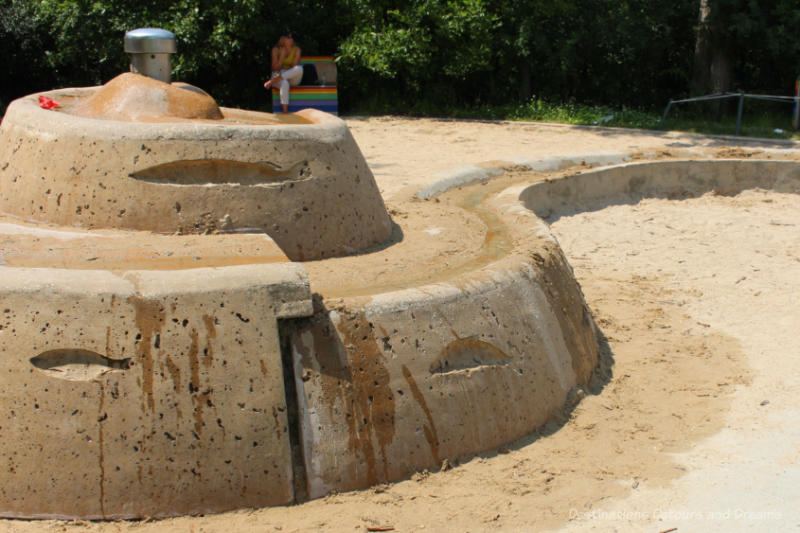
Read more in my post Nature Playground and Children’s Garden In Winnipeg’s Assiniboine Park.
The Pavilion Galleries
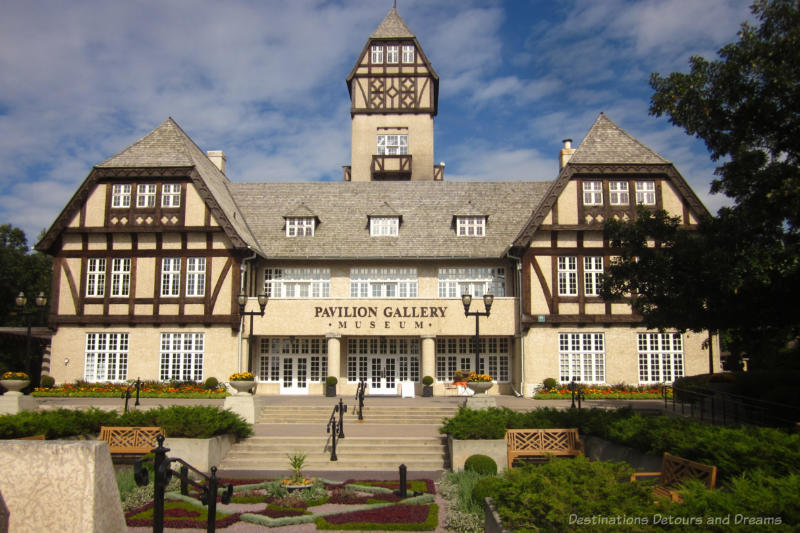
The Pavilion building is a landmark located in the centre of the park. The Winnipeg Architecture Foundation describes it as “Tudor style with a hint of Swiss-chalet in the mix.” It was built in 1930 to replace a 1908 structure destroyed by fire. Inside, you’ll find several free art galleries.
The Pavilion is home to the largest collections of works by renowed Manitoba artists Ivan Eyre, Walter J. Philips, and Clarence Tillenius. Through a partnership with the Winnipeg Art Gallery (WAG), curated exhibitions feature works drawn largely from the Assiniboine Park Conservancy’s and the WAG’s collections.
Here you’ll also find the Pooh Gallery. Displays tell the story of the creation of Winnie-the-Pooh and his connection with Winnipeg, the fictional teddy bear’s namesake. Read more in my post Winnie-the-Pooh in Winnipeg.
Lyric Theatre
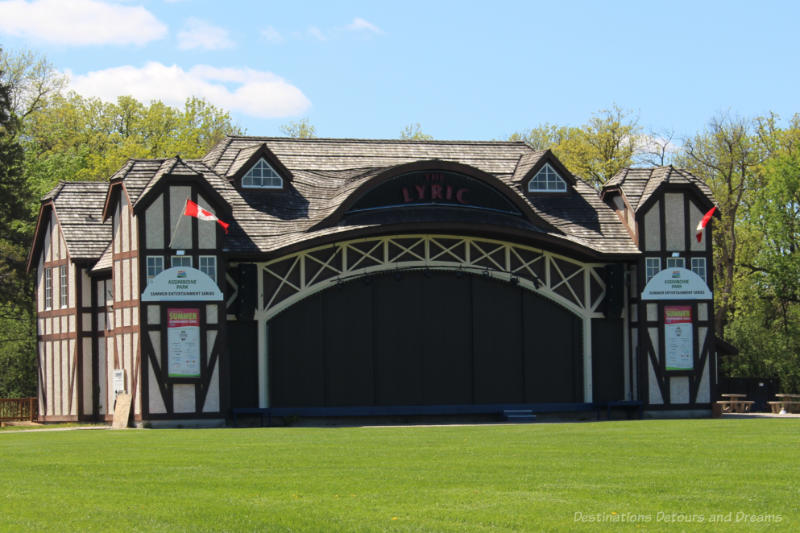
The Lyric Theatre, a large outdoor stage, is the site of Assiniboine Park’s Summer Entertainment Series. It features performances for every taste and age, including music, jazz, ballet, and movies. The free Movies in the Park and Ballet in the Park by the Royal Winnipeg Ballet Company are particularly popular performances. See the Assiniboine Park Event Calendar.
The Leaf and Gardens at the Leaf
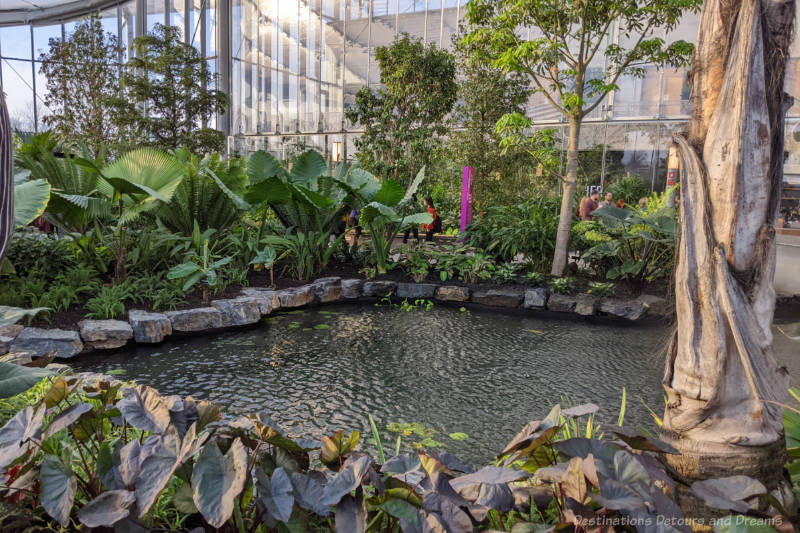
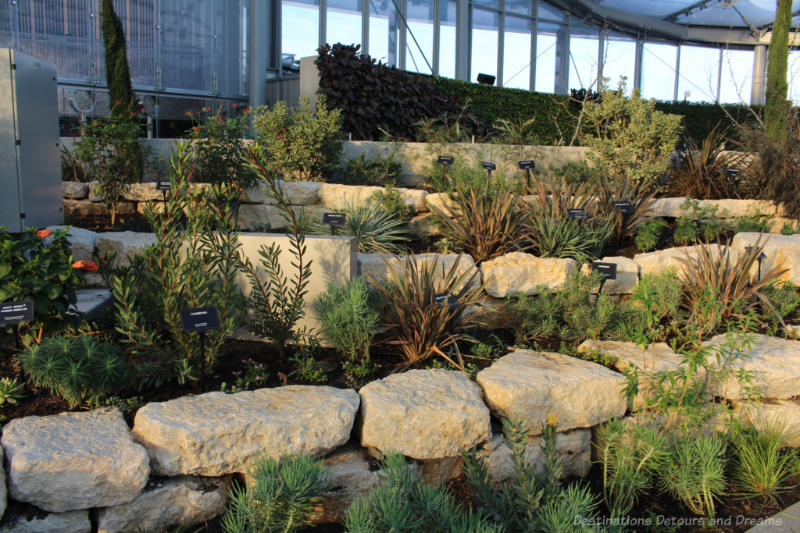
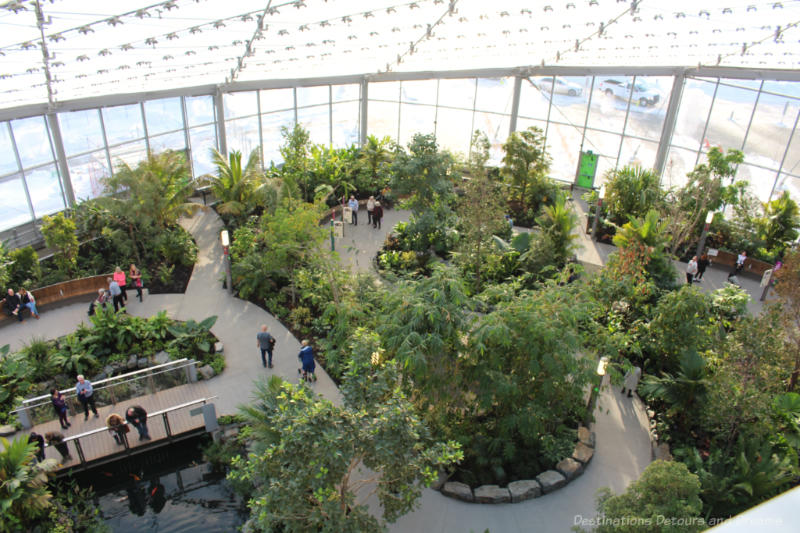
Located inside a stunning building with a translucent roof unfurling like a blossom, The Leaf is an indoor horticultural attraction containing four distinct biomes: the Hartley and Heather Richardson Tropical Biome, the Mediterranean Biome, Babs Asper Display House, and the Shirley Richardson Butterfly Garden. The Babs Asper Display House contains floral displays that change four to five times a year and explore seasonal and global themes. The other three biomes feature permanent vegetation that grows over the seasons and years.
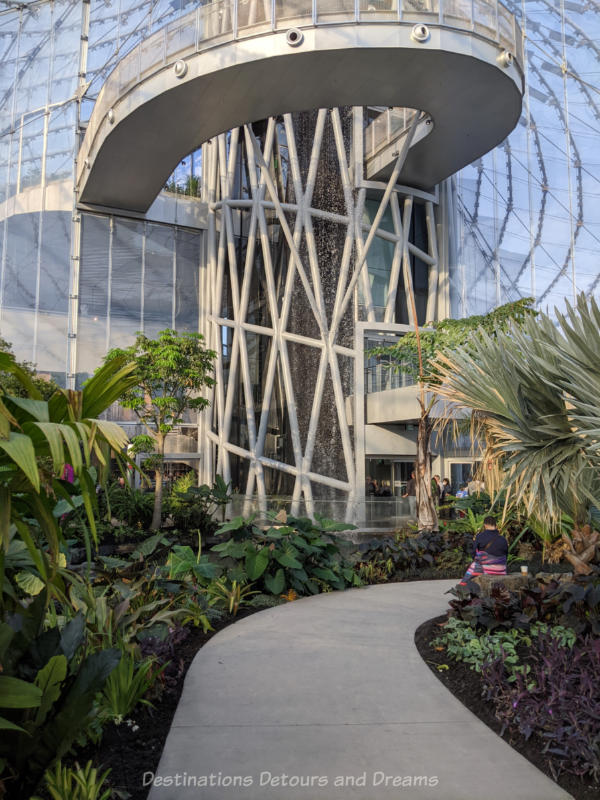
Read more about The Leaf in my post The Leaf Tropical Gardens In Winnipeg.
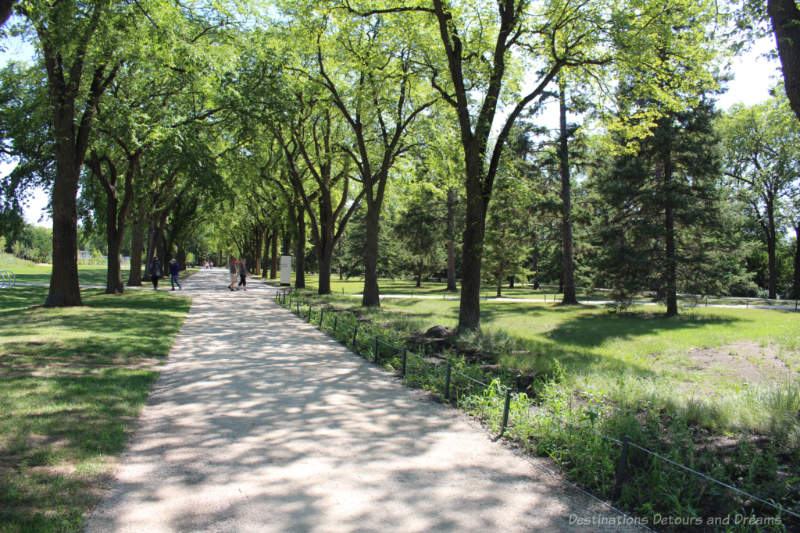
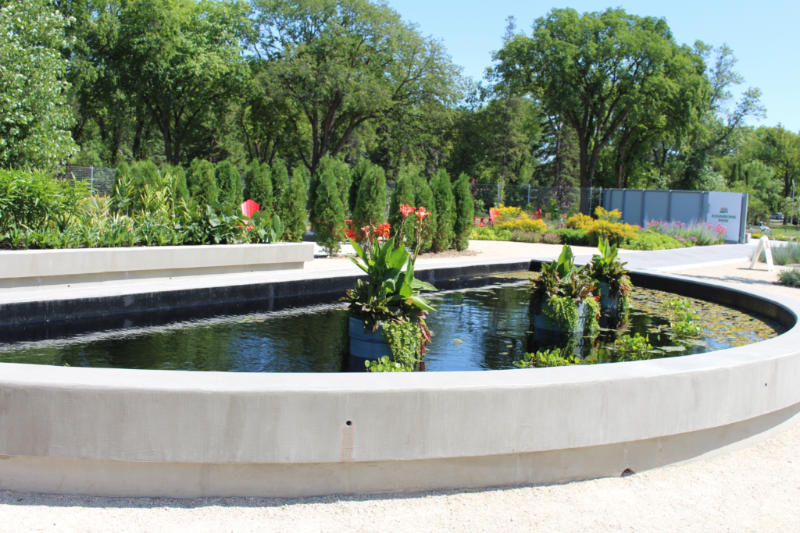
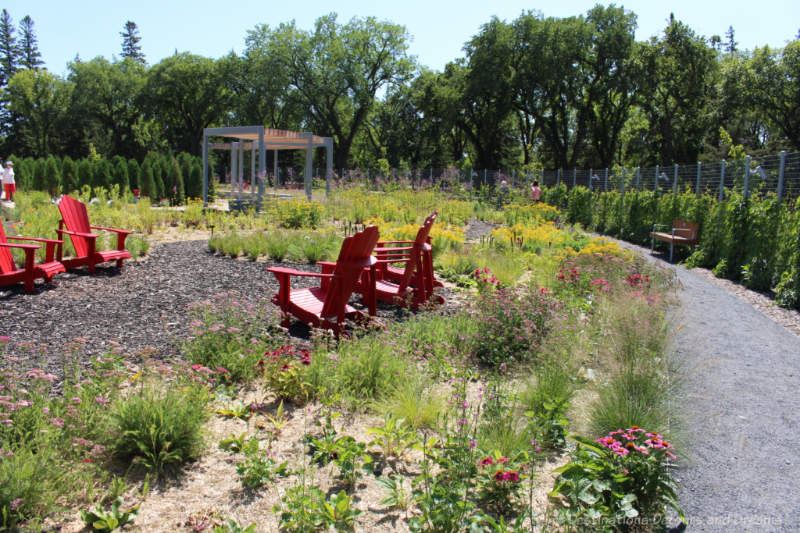
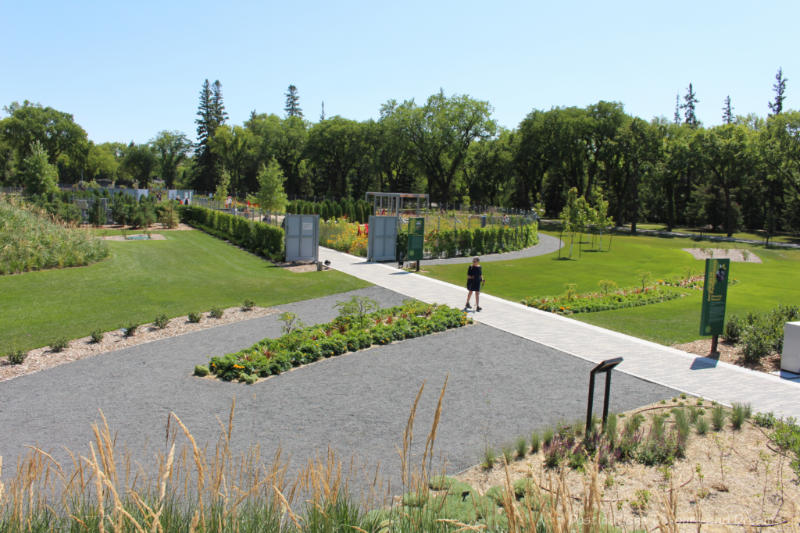
Located outside The Leaf, you’ll find the outdoor Gardens at the Leaf. In its nearly 30 acres you’ll find the Indigenous Peoples Garden, Kitchen Garden, Sensory Garden, Performance Garden, Seasonal Garden, and The Grove, a shady treed area. The gardens are lovely and peaceful to stroll through. Read more in my post Gardens At The Leaf in Winnipeg, Manitoba.
Citizen Walk of Fame
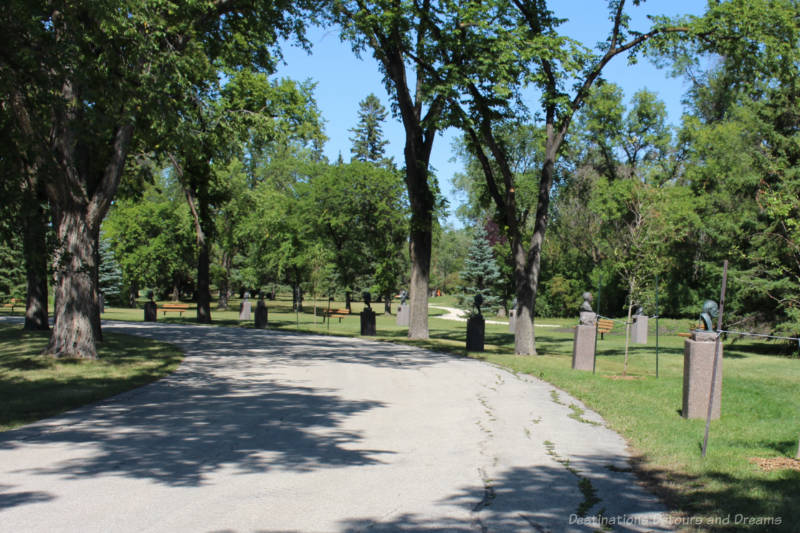
Next to the Gardens at the Leaf is the Citizen Walk of Fame. Pedestals lining a pathway beside the trees contain busts of Winnipeggers who have made outstanding contributions to Winnipeg’s quality of life. The Citizen Walk of Fame, initiated in the 1980s, is a project of the Winnipeg Real Estate Board,
Green Spaces and More
The park contains a number of lawn areas for picnicking, playing games, or resting. Seasonal fire pits and picnic sites can be booked. There are fields for athletics, cricket, volleyball, and soccer. The Terry Fox Fitness Trail in the south-east corner of the park features modern outdoor fitness equipment with instructional signage. Single, tandem, or unique pedal-powered novelty bikes can be rented from Bee2gether Bikes spring through fall. In the winter, there are cross-country ski trails and a toboggan hill.
A miniature steam train operates from late May to mid-October.
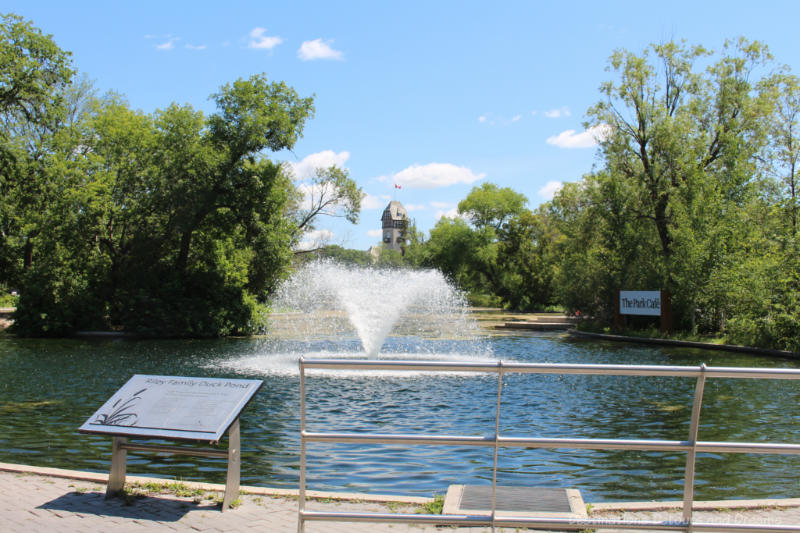
The Riley Family Duck Pond is a pretty spot in the park. The pond becomes a skating rink in the winter.
A brightly coloured totem pole sits on the edge of the Gardens at the Leaf. The Story of the Residential School Totem Pole, carved by Charles Joseph, is dedicated to residential school children. The stories of figures carved into the pole offer healing from an Indigenous perspective. The pole is owned by the Southern Chiefs (SCO) Organization and is only temporarily located in the park. When SCO completes the Wehwehneh Bahgahkinahgohn project at the former Hudson’s Bay Building in downtown Winnipeg, the pole will be moved there.
(Note: The Residential School Totem Pole is one of the featured places in my book 111 Places in Winnipeg That You Must Not Miss)
Between the Terry Fox Fitness Trail and the Indigenous Garden in the Gardens at the Leaf, you’ll find Locomotive 6043 on display. Built in 1929 by Canadian Locomotive Works and delivered to the Canadian National Railway, it made the last scheduled run of steam power on Canadian rails on April 25, 1960 in a trip from The Pas to Winnipeg, Manitoba.
Food
Inside the Zoo, the Tundra Grill offers light meals and snacks with windows looking onto the polar bear field. There are also a number of seasonal (summer) concessions throughout the Zoo.
Inside The Leaf building but outside of the paid-entry conservatory area you’ll find the Gather Craft Kitchen and Bar. Open for lunch and dinner, the restaurant features globally-inspired dishes with local ingredients and offers small plates that encourage sharing and sampling as well as large main plates. Reservations are recommended. There is also a Coffee Bar in the Leaf offering grab and go beverages, snacks, lunches, and treats.
Open daily from 9am to 4pm, the Park Café at the edge of the Riley Family Duck Pond serves all-day breakfast as wells as number of lunch options.
Built from a 20 -foot shipping containers, the Cargo Bar is a pop-up patio on the banks of the Riley Family Duck Pond featuring street tacos, small tapas, mini charcuterie boxes, cocktails, mocktails, local craft beer, wine, and other beverages. It is open seasonally during spring to fall. It also pops up in the middle of winter and offers hot and cold beverages, including hot chocolate, coffee, cider, and a selection of local craft beers, wine, and specialty cocktails, to enjoy around a warming fire pit.
Check the Assiniboine Park website for hours of each of the eateries. Of course, you can always bring your own picnic.
Visiting Assiniboine Park
Admission to the park and most of its areas and gardens are free. The Assiniboine Park Zoo and The Leaf each have entrance fees.
Assiniboine Park is open daily year-round. The public green space is open 24 hours. Some gardens are open from 9am to dusk. The Pavilion is open from 9am to 5pm in summer and from 9am to 4pm in winter. Check the park’s website for other hour information.
There are a number of parking lots as indicated on the park’s map. The park can be reached by city buses running along Portage Avenue west and along Corydon/Roblin Avenue.
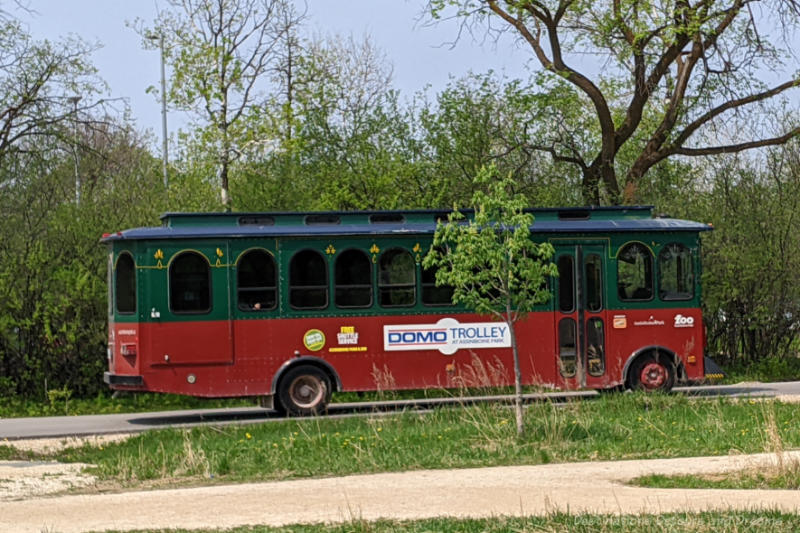
From mid-May to mid-October, the Domo Trolley travels on a loop throughout the park, providing access to the various spots within it.
Never miss a story. Sign up for Destinations Detours and Dreams free monthly e-newsletter and receive behind-the-scenes information and sneak peeks ahead.
PIN IT
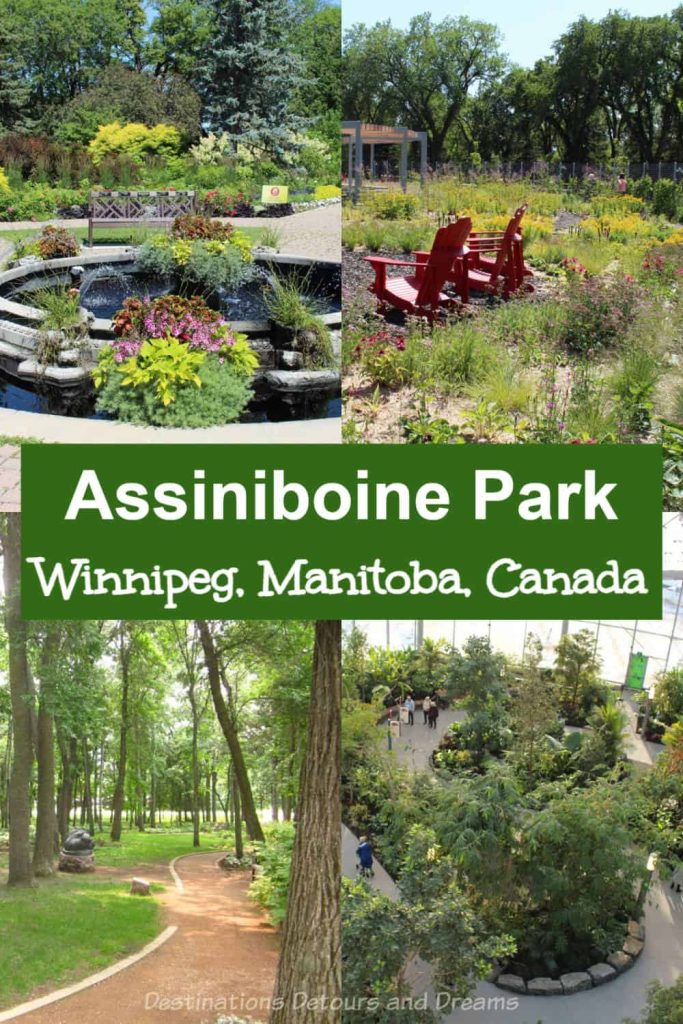
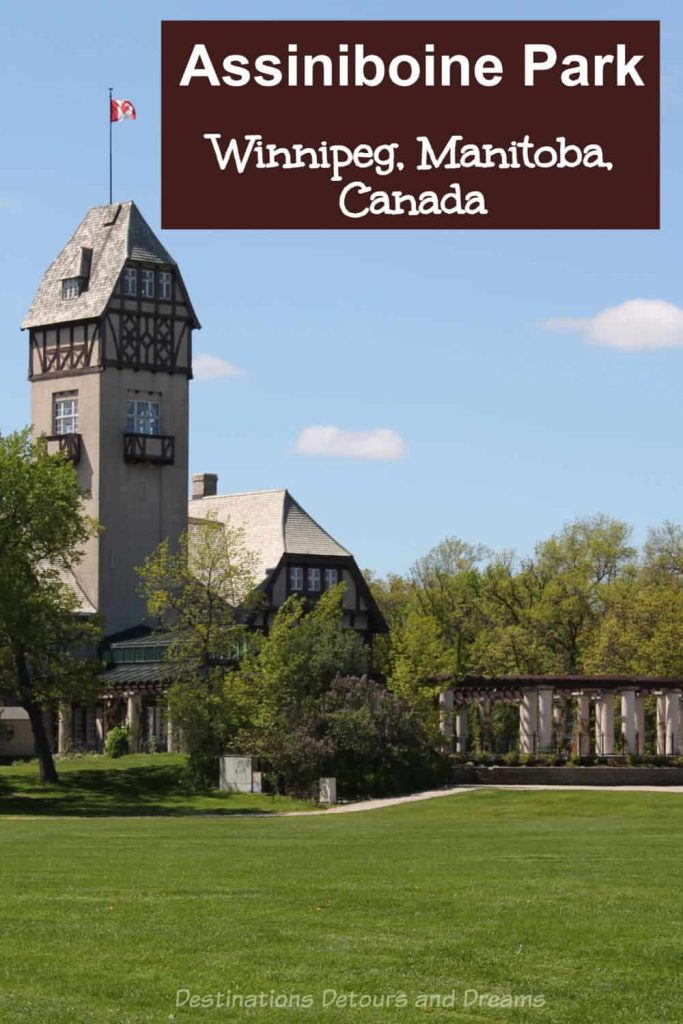
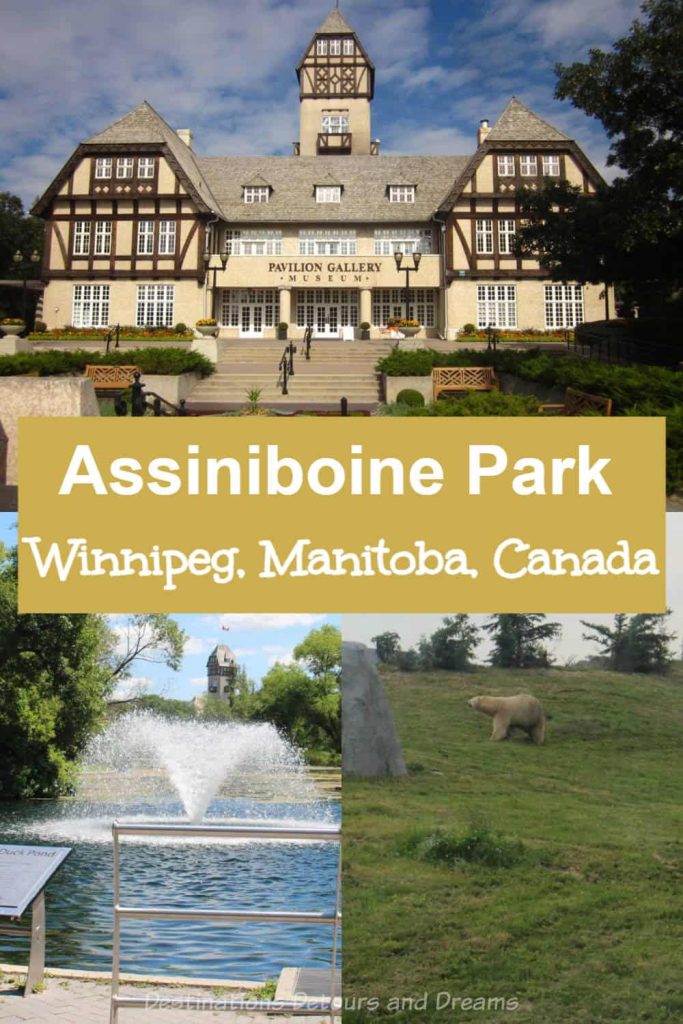

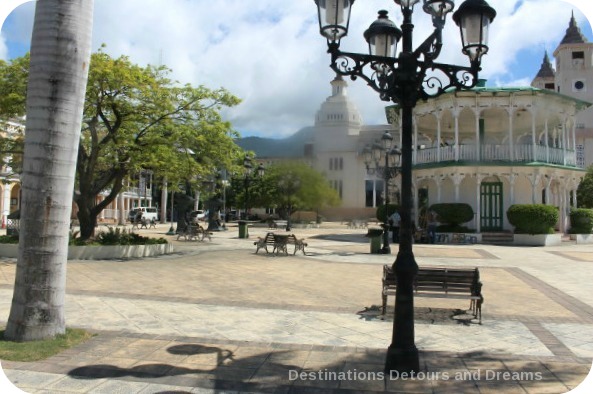
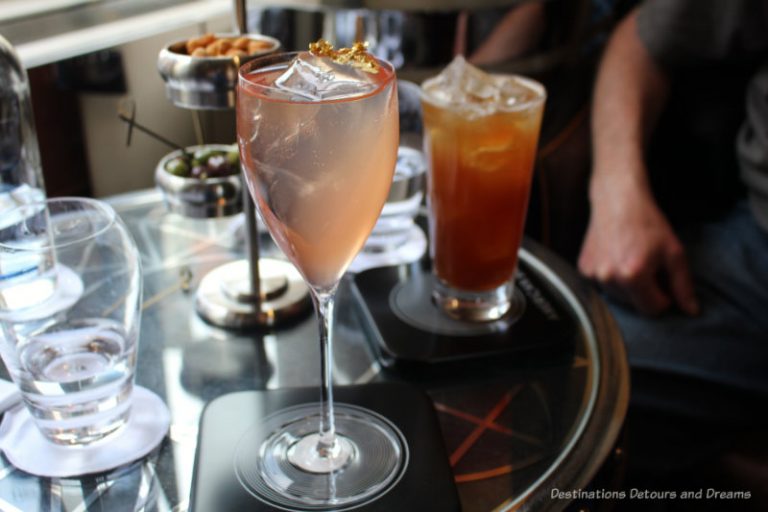
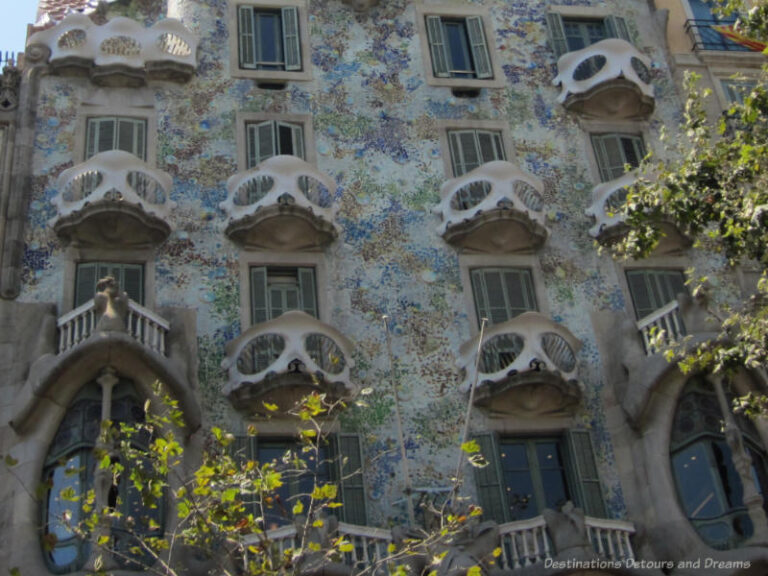
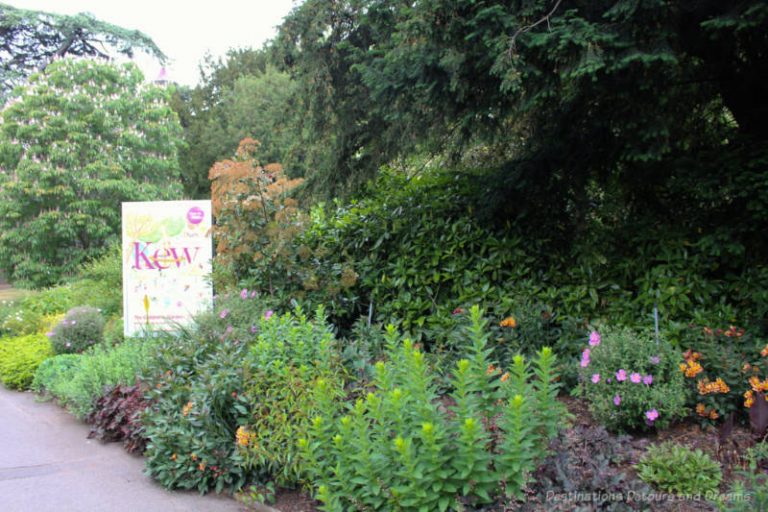
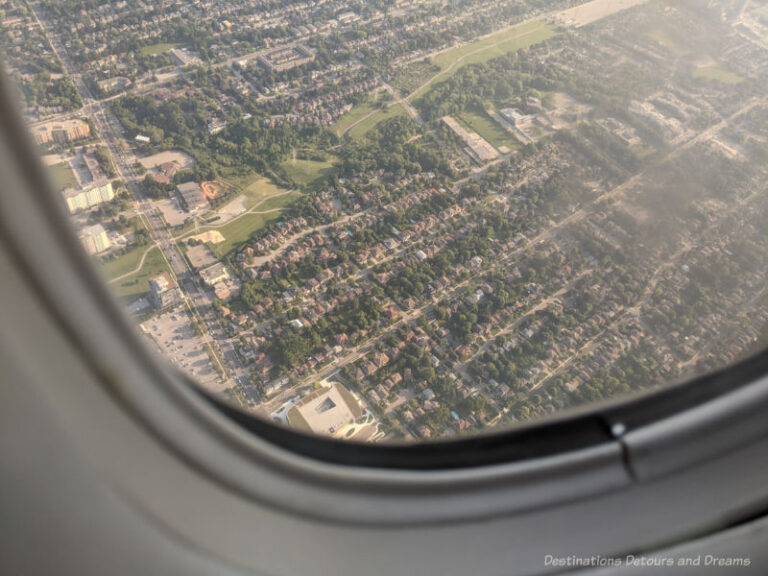
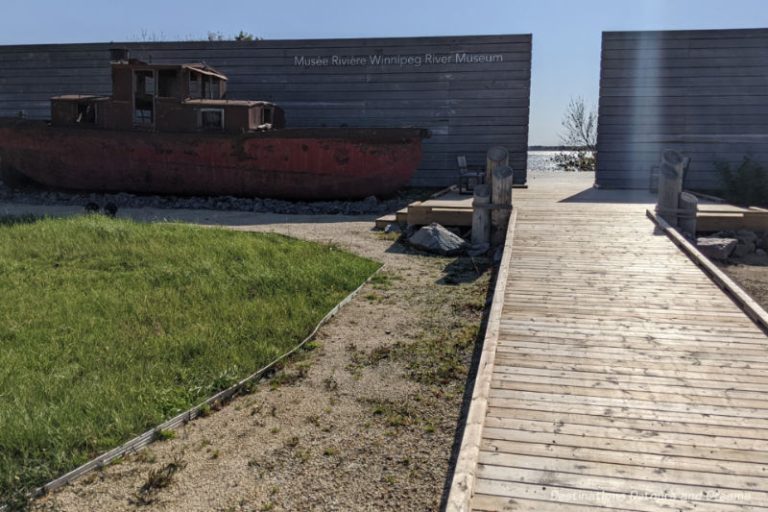
What a great underwater shot of a polar bear. I had no idea what it was when I first saw the picture.
Ken, the underwater viewing tunnel is very cool!